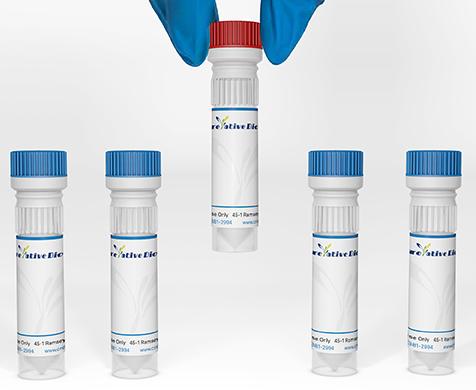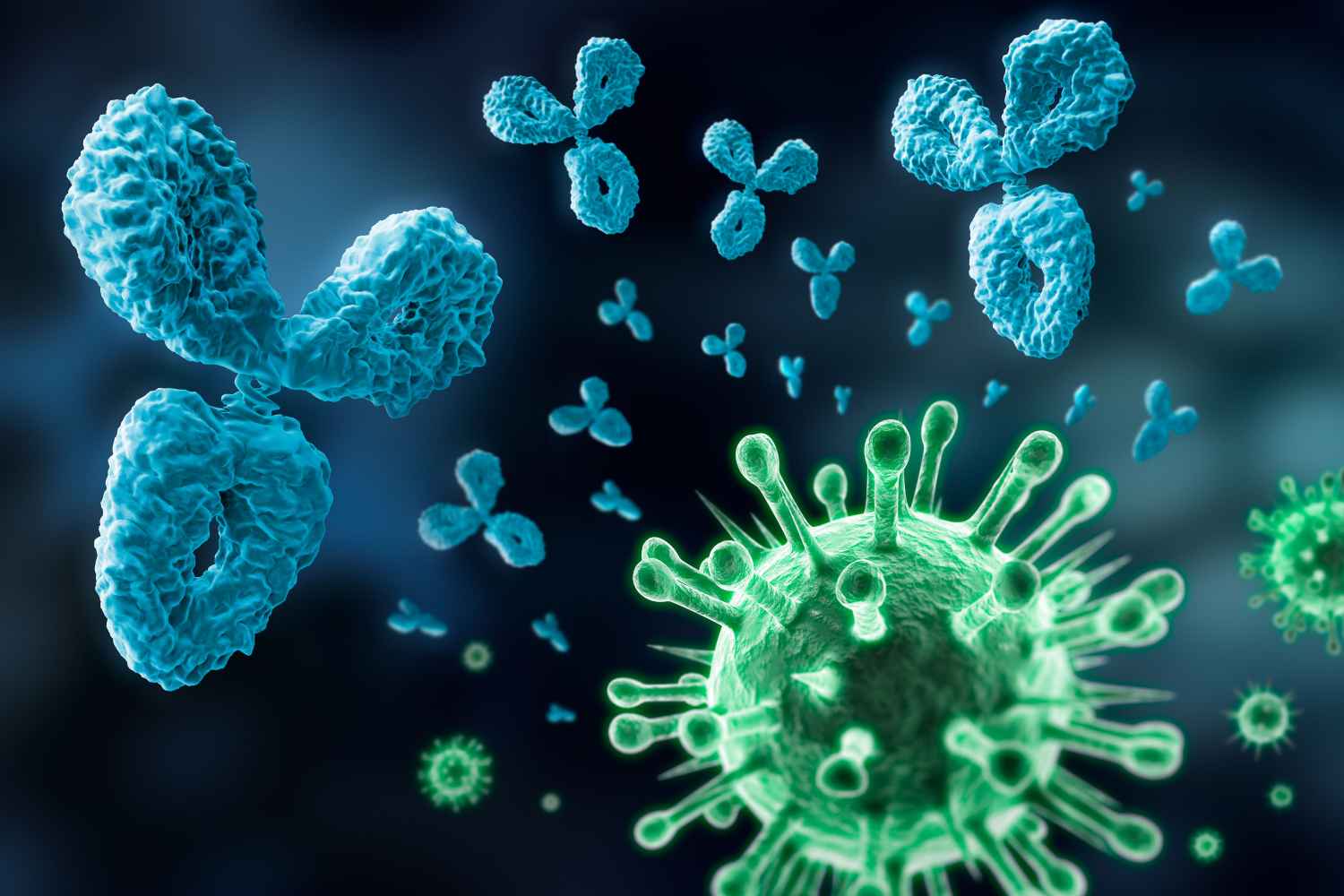WAS
The Wiskott-Aldrich syndrome (WAS) family of proteins share similar domain structure, and are involved in transduction of signals from receptors on the cell surface to the actin cytoskeleton. The presence of a number of different motifs suggests that they are regulated by a number of different stimuli, and interact with multiple proteins. Recent studies have demonstrated that these proteins, directly or indirectly, associate with the small GTPase, Cdc42, known to regulate formation of actin filaments, and the cytoskeletal organizing complex, Arp2/3. Wiskott-Aldrich syndrome is a rare, inherited, X-linked, recessive disease characterized by immune dysregulation and microthrombocytopenia, and is caused by mutations in the WAS gene. The WAS gene product is a cytoplasmic protein, expressed exclusively in hematopoietic cells, which show signalling and cytoskeletal abnormalities in WAS patients. A transcript variant arising as a result of alternative promoter usage, and containing a different 5' UTR sequence, has been described, however, its full-length nature is not known.
Full Name
WASP actin nucleation promoting factor
Research Area
Signal Transduction
Function
Effector protein for Rho-type GTPases that regulates actin filament reorganization via its interaction with the Arp2/3 complex (PubMed:12235133, PubMed:12769847, PubMed:16275905).
Important for efficient actin polymerization (PubMed:12235133, PubMed:16275905, PubMed:8625410).
Possible regulator of lymphocyte and platelet function (PubMed:9405671).
Mediates actin filament reorganization and the formation of actin pedestals upon infection by pathogenic bacteria (PubMed:18650809).
In addition to its role in the cytoplasmic cytoskeleton, also promotes actin polymerization in the nucleus, thereby regulating gene transcription and repair of damaged DNA (PubMed:20574068).
Promotes homologous recombination (HR) repair in response to DNA damage by promoting nuclear actin polymerization, leading to drive motility of double-strand breaks (DSBs) (PubMed:29925947).
Important for efficient actin polymerization (PubMed:12235133, PubMed:16275905, PubMed:8625410).
Possible regulator of lymphocyte and platelet function (PubMed:9405671).
Mediates actin filament reorganization and the formation of actin pedestals upon infection by pathogenic bacteria (PubMed:18650809).
In addition to its role in the cytoplasmic cytoskeleton, also promotes actin polymerization in the nucleus, thereby regulating gene transcription and repair of damaged DNA (PubMed:20574068).
Promotes homologous recombination (HR) repair in response to DNA damage by promoting nuclear actin polymerization, leading to drive motility of double-strand breaks (DSBs) (PubMed:29925947).
Biological Process
Actin filament polymerization
Actin filament-based movement
Actin polymerization or depolymerization
Blood coagulation
Cdc42 protein signal transduction
Cellular response to type II interferon
Defense response
Endosomal transport
Epidermis development
Immune response
Negative regulation of cell motility
Negative regulation of stress fiber assembly
Positive regulation of double-strand break repair via homologous recombination
Positive regulation of transcription by RNA polymerase II
Protein-containing complex assembly
Regulation of actin polymerization or depolymerization
Regulation of lamellipodium assembly
Regulation of stress fiber assembly
Regulation of T cell antigen processing and presentation
T cell activation
Actin filament-based movement
Actin polymerization or depolymerization
Blood coagulation
Cdc42 protein signal transduction
Cellular response to type II interferon
Defense response
Endosomal transport
Epidermis development
Immune response
Negative regulation of cell motility
Negative regulation of stress fiber assembly
Positive regulation of double-strand break repair via homologous recombination
Positive regulation of transcription by RNA polymerase II
Protein-containing complex assembly
Regulation of actin polymerization or depolymerization
Regulation of lamellipodium assembly
Regulation of stress fiber assembly
Regulation of T cell antigen processing and presentation
T cell activation
Cellular Location
Cytoplasm, cytoskeleton
Nucleus
Nucleus
Involvement in disease
Wiskott-Aldrich syndrome (WAS):
An X-linked recessive immunodeficiency characterized by eczema, thrombocytopenia, recurrent infections, and bloody diarrhea. Death usually occurs before age 10.
Thrombocytopenia 1 (THC1):
A form of thrombocytopenia, a hematologic disorder defined by a decrease in the number of platelets in circulating blood, resulting in the potential for increased bleeding and decreased ability for clotting.
Neutropenia, severe congenital, X-linked (XLN):
A disorder of hematopoiesis characterized by maturation arrest of granulopoiesis at the level of promyelocytes with peripheral blood absolute neutrophil counts below 0.5 x 10(9)/l and early onset of severe bacterial infections.
An X-linked recessive immunodeficiency characterized by eczema, thrombocytopenia, recurrent infections, and bloody diarrhea. Death usually occurs before age 10.
Thrombocytopenia 1 (THC1):
A form of thrombocytopenia, a hematologic disorder defined by a decrease in the number of platelets in circulating blood, resulting in the potential for increased bleeding and decreased ability for clotting.
Neutropenia, severe congenital, X-linked (XLN):
A disorder of hematopoiesis characterized by maturation arrest of granulopoiesis at the level of promyelocytes with peripheral blood absolute neutrophil counts below 0.5 x 10(9)/l and early onset of severe bacterial infections.
PTM
Phosphorylated at Tyr-291 by FYN and HCK, inducing WAS effector activity after TCR engagement. Phosphorylation at Tyr-291 enhances WAS activity in promoting actin polymerization and filopodia formation.
View more
Anti-WAS antibodies
+ Filters
 Loading...
Loading...
Target: WAS
Host: Mouse
Antibody Isotype: IgG2a, κ
Specificity: Human
Clone: 5A5
Application*: WB
Target: WAS
Host: Mouse
Antibody Isotype: IgG2b, κ
Specificity: Human
Clone: 3H5
Application*: WB, E
Target: WAS
Host: Mouse
Antibody Isotype: IgG1
Specificity: Human
Clone: CBYY-1648
Application*: WB, IC
Target: WAS
Host: Rabbit
Antibody Isotype: IgG
Specificity: Human
Clone: CBYY-1629
Application*: WB, IP
Target: WAS
Host: Mouse
Antibody Isotype: IgG2a
Specificity: Human
Clone: CBYY-1617
Application*: WB, P, F
Target: WAS
Host: Rabbit
Antibody Isotype: IgG
Specificity: Human
Clone: CBYY-1595
Application*: IP, WB
Target: WAS
Host: Mouse
Antibody Isotype: IgG1
Specificity: Human
Clone: CBYY-1587
Application*: WB
Target: WAS
Host: Mouse
Antibody Isotype: IgG2a
Specificity: Human
Clone: CBT2067
Application*: IH, F
Target: WAS
Host: Mouse
Antibody Isotype: IgG2b, κ
Specificity: Human
Clone: CBWJW-047
Application*: E, WB
More Infomation
Hot products 
-
Mouse Anti-ATP5F1A Recombinant Antibody (51) (CBMAB-A4043-YC)

-
Rabbit Anti-AKT2 (Phosphorylated S474) Recombinant Antibody (V2-556130) (PTM-CBMAB-0605LY)

-
Mouse Anti-AKT1 (Phosphorylated S473) Recombinant Antibody (V2-505430) (PTM-CBMAB-0067LY)

-
Mouse Anti-ARSA Recombinant Antibody (CBYC-A799) (CBMAB-A3679-YC)

-
Mouse Anti-B2M Recombinant Antibody (CBYY-0050) (CBMAB-0050-YY)

-
Mouse Anti-ATG5 Recombinant Antibody (9H197) (CBMAB-A3945-YC)

-
Mouse Anti-DMPK Recombinant Antibody (CBYCD-324) (CBMAB-D1200-YC)

-
Mouse Anti-ASH1L Monoclonal Antibody (ASH5H03) (CBMAB-1372-YC)

-
Mouse Anti-CD33 Recombinant Antibody (6C5/2) (CBMAB-C8126-LY)

-
Mouse Anti-ELAVL4 Recombinant Antibody (6B9) (CBMAB-1132-YC)

-
Mouse Anti-CGAS Recombinant Antibody (CBFYM-0995) (CBMAB-M1146-FY)

-
Mouse Anti-C5B-9 Recombinant Antibody (CBFYA-0216) (CBMAB-X0304-FY)

-
Mouse Anti-DISP2 Monoclonal Antibody (F66A4B1) (CBMAB-1112CQ)

-
Mouse Anti-BACE1 Recombinant Antibody (CBLNB-121) (CBMAB-1180-CN)

-
Mouse Anti-DLG1 Monolconal Antibody (4F3) (CBMAB-0225-CN)

-
Mouse Anti-CFL1 (Phospho-Ser3) Recombinant Antibody (CBFYC-1770) (CBMAB-C1832-FY)

-
Mouse Anti-DLC1 Recombinant Antibody (D1009) (CBMAB-D1009-YC)

-
Mouse Anti-AAV-5 Recombinant Antibody (V2-503416) (CBMAB-V208-1402-FY)

-
Mouse Anti-ADIPOR2 Recombinant Antibody (V2-179983) (CBMAB-A1369-YC)

-
Mouse Anti-AQP2 Recombinant Antibody (G-3) (CBMAB-A3359-YC)

For Research Use Only. Not For Clinical Use.
(P): Predicted
* Abbreviations
- AActivation
- AGAgonist
- APApoptosis
- BBlocking
- BABioassay
- BIBioimaging
- CImmunohistochemistry-Frozen Sections
- CIChromatin Immunoprecipitation
- CTCytotoxicity
- CSCostimulation
- DDepletion
- DBDot Blot
- EELISA
- ECELISA(Cap)
- EDELISA(Det)
- ESELISpot
- EMElectron Microscopy
- FFlow Cytometry
- FNFunction Assay
- GSGel Supershift
- IInhibition
- IAEnzyme Immunoassay
- ICImmunocytochemistry
- IDImmunodiffusion
- IEImmunoelectrophoresis
- IFImmunofluorescence
- IGImmunochromatography
- IHImmunohistochemistry
- IMImmunomicroscopy
- IOImmunoassay
- IPImmunoprecipitation
- ISIntracellular Staining for Flow Cytometry
- LALuminex Assay
- LFLateral Flow Immunoassay
- MMicroarray
- MCMass Cytometry/CyTOF
- MDMeDIP
- MSElectrophoretic Mobility Shift Assay
- NNeutralization
- PImmunohistologyp-Paraffin Sections
- PAPeptide Array
- PEPeptide ELISA
- PLProximity Ligation Assay
- RRadioimmunoassay
- SStimulation
- SESandwich ELISA
- SHIn situ hybridization
- TCTissue Culture
- WBWestern Blot

Online Inquiry







